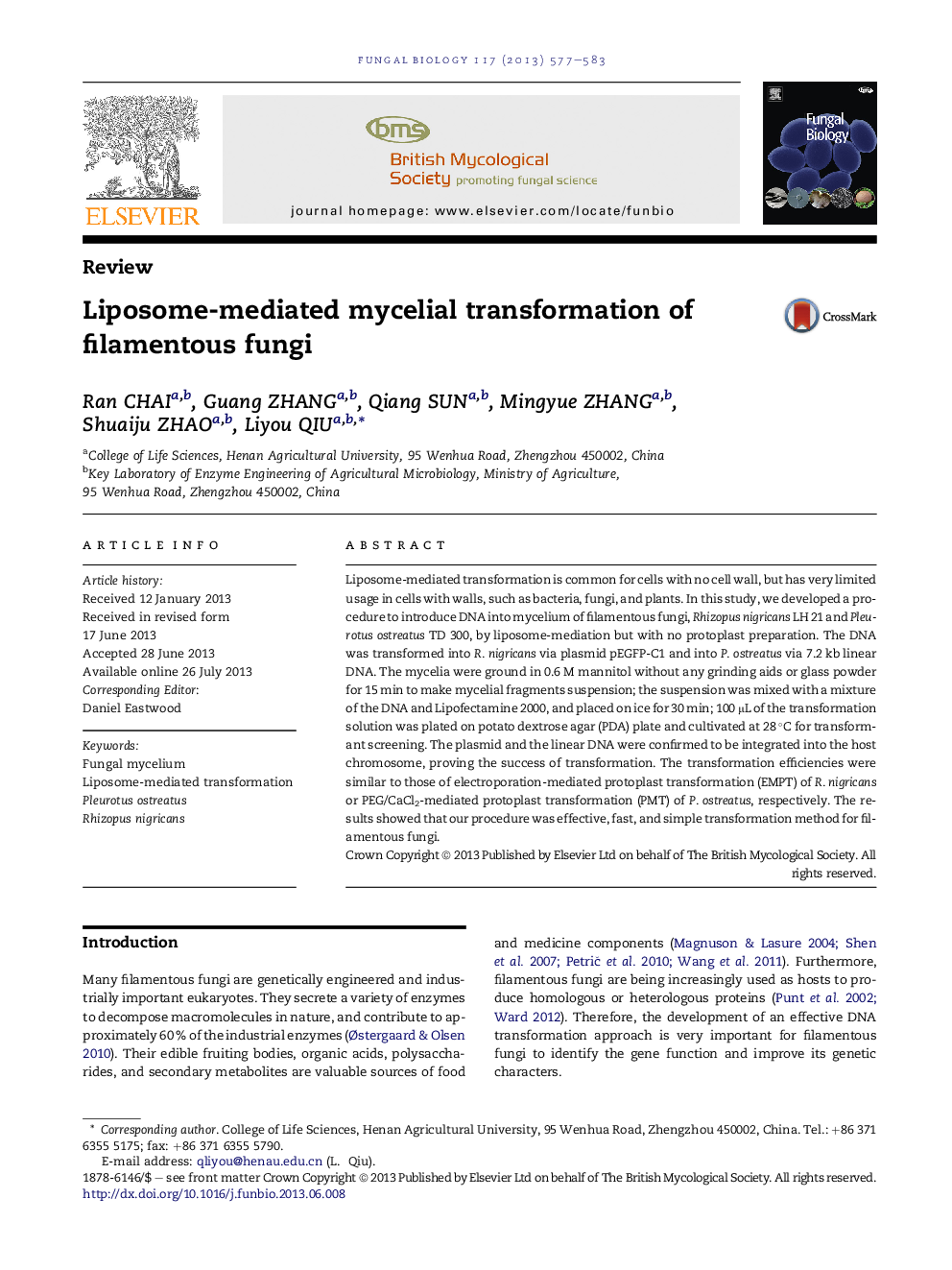| Article ID | Journal | Published Year | Pages | File Type |
|---|---|---|---|---|
| 4357221 | Fungal Biology | 2013 | 7 Pages |
•We develop a novel procedure to introduce DNA into filamentous fungi.•The procedure is liposome-mediated mycelial rather than protoplast transformation.•Plasmid and long linear DNA are all effectually transformed by this procedure.•The procedure is fast and effective transformation method for filamentous fungi.
Liposome-mediated transformation is common for cells with no cell wall, but has very limited usage in cells with walls, such as bacteria, fungi, and plants. In this study, we developed a procedure to introduce DNA into mycelium of filamentous fungi, Rhizopus nigricans LH 21 and Pleurotus ostreatus TD 300, by liposome-mediation but with no protoplast preparation. The DNA was transformed into R. nigricans via plasmid pEGFP-C1 and into P. ostreatus via 7.2 kb linear DNA. The mycelia were ground in 0.6 M mannitol without any grinding aids or glass powder for 15 min to make mycelial fragments suspension; the suspension was mixed with a mixture of the DNA and Lipofectamine 2000, and placed on ice for 30 min; 100 μL of the transformation solution was plated on potato dextrose agar (PDA) plate and cultivated at 28 °C for transformant screening. The plasmid and the linear DNA were confirmed to be integrated into the host chromosome, proving the success of transformation. The transformation efficiencies were similar to those of electroporation-mediated protoplast transformation (EMPT) of R. nigricans or PEG/CaCl2-mediated protoplast transformation (PMT) of P. ostreatus, respectively. The results showed that our procedure was effective, fast, and simple transformation method for filamentous fungi.
